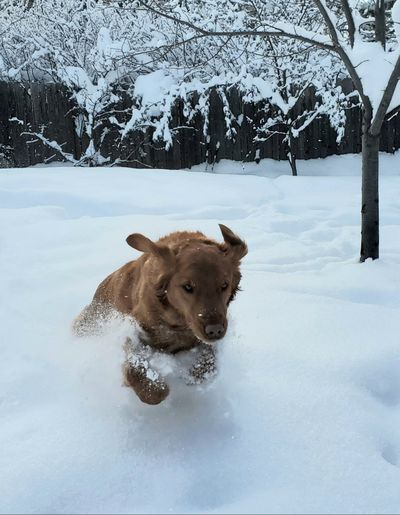Weathercatch: 2021 – From record-shattering heat to rare snow squall and arctic blast

Last summer we got clobbered by an historic heatwave, followed by an extreme drought. Then, the last week of December, we experienced an unusual snow squall, a snow dump and a surge of arctic air.
Adieu, weather of 2021.
The Inland Northwest wrapped up the year with its coldest weather of 2021. Although the cold and snow remain fresh on our minds, in terms of extremes, summer, not winter, was the year’s weather chart-buster.
With that, here’s a look at some of 2021’s most memorable weather events, which begin, not surprisingly, last summer.
Hands down, the most significant weather event of the year was a heatwave that began bearing down on the Pacific Northwest in mid-June. In Spokane, the mercury soared to 109 degrees on June 29, obliterating long-standing heat records and making it the hottest temperature observed in the city’s history. (Also: 109 degrees is a steep 27 degrees above normal for that date.) All-time heat records also fell in other locations, ranging from Seattle, Vancouver and Olympia to Yakima, Wenatchee, Walla Walla and Rosalia. About 100 heat-related deaths were reported statewide between June 26-July 2, according to the Washington State Department of Health, 17 of them in Spokane County.
Then came July. Not only was it the hottest July recorded in Spokane – it was also the hottest month . Three heatwaves that month left the city with high temperatures averaging 91.4 degrees, compared to the average high of 84.1. Even the overnight lows ran high, averaging 63.6 degrees compared to 54 degrees. Also, it rained little more than a tenth of an inch all month, pushing the Inland Northwest into “exceptional” drought conditions, the most severe category. The extreme heat and dryness contributed to 12 large wildfires burning in Eastern Washington by the month’s end.
With 42 days that ran at or above 90 degrees, it’s no surprise that 2021 produced the hottest summer in 140 years of recorded history across much of the Inland Northwest. Dramatically warmer overnight temperatures helped drive that record. For the first time, the season’s overnight lows averaged above 60 degrees.
Jumping ahead to the day after Christmas, cellphones in multiple locations across the Inland Northwest buzzed with an emergency alert from the Spokane National Weather Service that a snow squall was heading our way. Not long afterward, brief but intense bursts of snow and wind swooped into the region, suddenly reducing visibility and creating slick roads. Snow squalls, “one of the most dangerous winter weather phenomena,” according to the weather service, are typically associated with strong cold fronts that usher in arctic air.
An arctic blast is just what arrived the following day, when the most frigid temperatures of the year took hold. The pattern shake-up also delivered snow. On Dec. 30, it snowed 2.6 inches in Spokane, 6 inches in Pullman, and a startling 7.2 inches in Lewiston. Spokane’s coldest temperature of 2021 arrived on Dec. 31, with a low of 2 degrees. The arctic stretch lasted nearly a week.
One more thing; Spokane’s snowiest day of the year was Dec. 24, when 3.9 inches fell. As you can see, 2021’s most extreme winter weather was packed into its final week.
With the exception of blowing and drifting snow and areas of freezing fog, the opening week of 2022 has been tamer than the close of 2021. High temperatures are forecast to rise into the upper 30s Friday, accompanied by a mix of rain and snow. As for this weekend, temperatures should return to the low 30s, with drier conditions and some sunshine.